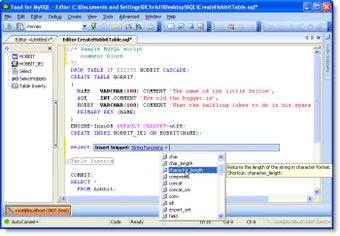Learn More About the MySQL Toolkit With Toad for MySQL
Screenshots
In this tutorial, we will discuss the basics of how to install and run the MySQL client in Windows, as well as how to use some of the MySQL plugins available on the web. Of course, you don't need to understand anything about programming to successfully use the MySQL database in Windows - in fact, most of the MySQL functions are extremely simple. We will discuss the common functions like inserting a data table, creating and managing multiple databases, running complicated queries and updating information from a database. But for now, let's just focus on the simple stuff, like how to insert a data table.
As you may not know, MySQL is a widely used relational database management system (RDBMS) that can be integrated with a wide variety of applications. One of the many reasons why this open source RDBMS has become so popular over the years is because it is easy to learn and implement. There are no licensing fees required, and users can build it themselves without any special technical skills. However, as you probably know, MySQL is also a very powerful database management system, and if you are going to use it in your own projects, you should make sure that you have a good and reliable source code management tool that enables you to quickly create and run complex MySQL transactions in a reliable manner. That is why many programmers prefer to use the open source solution called Toad for MySQL, which is available for download as a free download.
You might wonder why developers would want to use an open source RDBMS like Toad for MySQL. Well, as the name suggests, it is very easy to learn and use, and it provides many benefits that cannot be found in proprietary RDBMS like Microsoft Access. As an example, you can use MySQL as a data manipulation language and then apply it to a more complex data storage scenario through the use of the freely available Toad for MySQL plugin called Blueboard. Also, with the help of this handy little program, you can quickly debug your MySQL database problems in a matter of seconds, which significantly reduces the time required to fix an issue in production environments.


